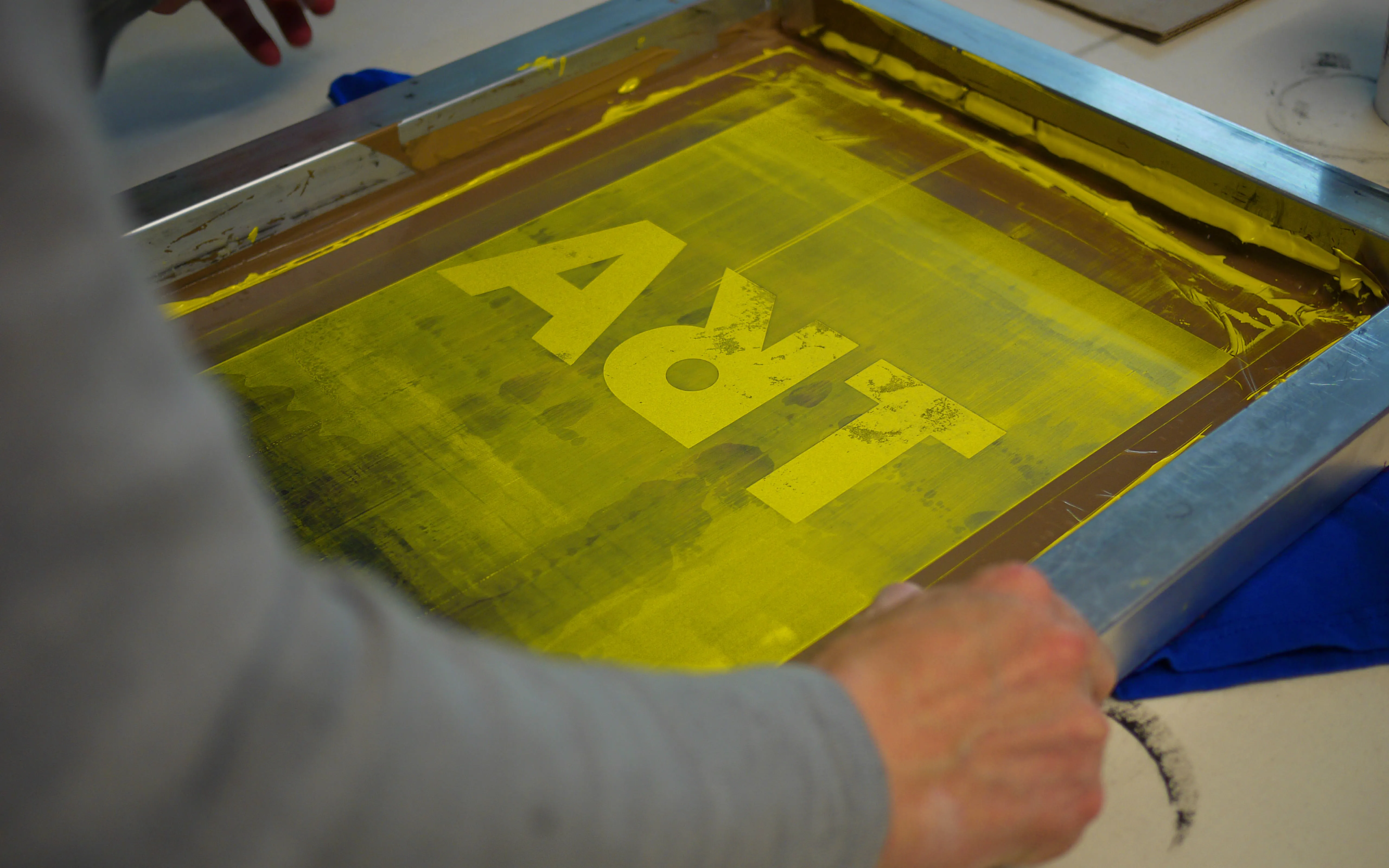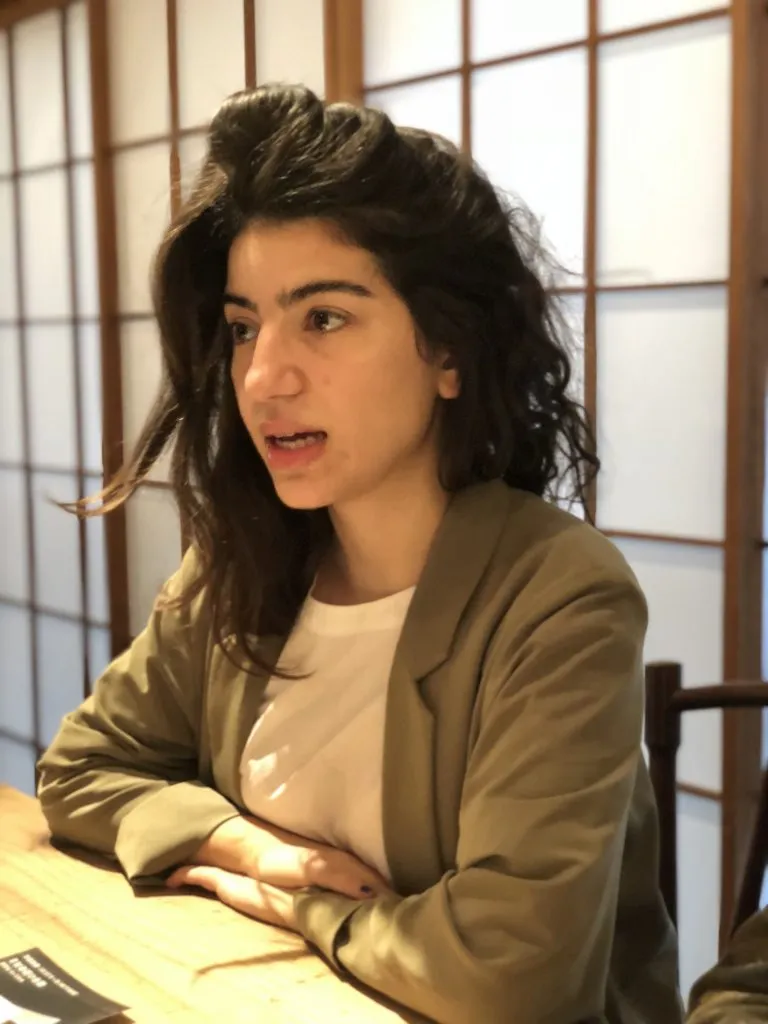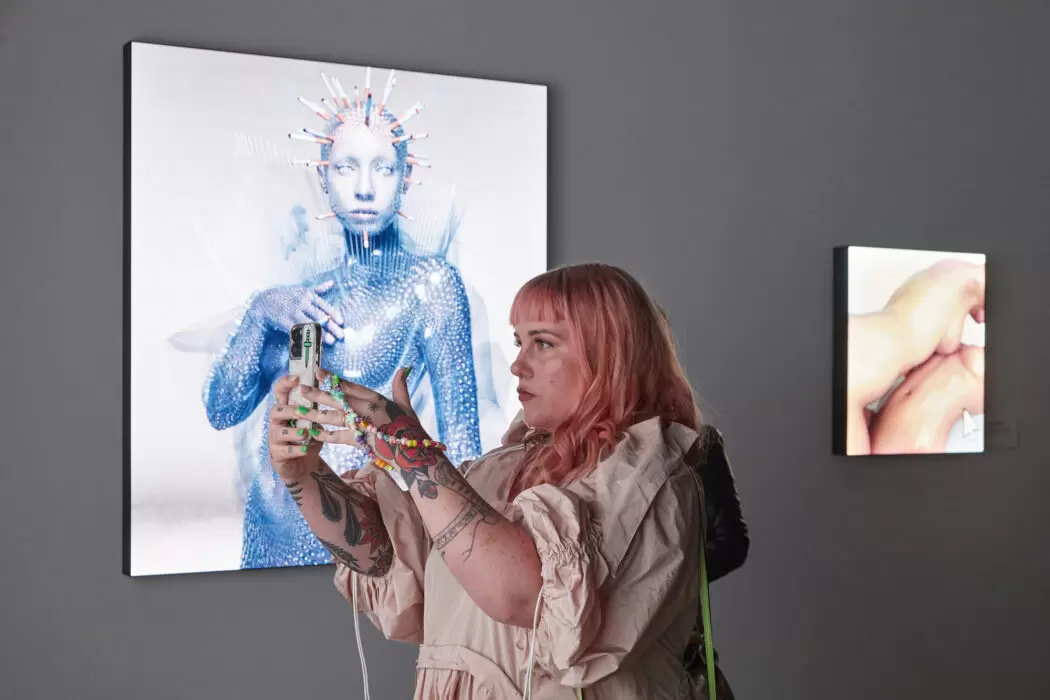.ART Digital Innovation in Art Nominee, ArtRabbit: “Technology lends a voice to those seldom heard”
Interview with Vivi Kallinikou, Editor in Chief at ArtRabbit - an independent digital art platform for promoting, discovering and appreciating contemporary art and visual culture.


ArtRabbit is an independent digital art platform for promoting, discovering and appreciating contemporary art and visual culture. Its mission is to make art as accessible as possible. For those who love art, this means making art easier to find. For those who have yet to fall in love with art, this means making it less daunting to step into an art space. And for those who work with art, this means having access to powerful tools to help you share, promote, and educate about art and your programmes.
Vivi Kallinikou is an Editor, digital producer and advocate for aesthetic literacy. From her position as Editor in Chief at ArtRabbit, she talks to .ART about its goal of democratizing the way the art world is operated and accessed, the lines between disciplines blurring even further due to technological transformation, and about the birth of ideas.
Tell us about your creative path. What were you busy with prior to joining ArtRabbit?
I joined ArtRabbit in 2015. I had just finished my MA in Global Arts/Contemporary Art Theory at Goldsmiths and was working on a research project about social art practices when the opportunity arose to help build a new version of ArtRabbit. Tom (Elsner) started ArtRabbit as a side project in 2006 and was, at the time I interviewed for the job, planning to turn the basic listing service into an international art network. I was immediately convinced by his idea of representing a multitude of voices. I saw ArtRabbit’s potential to reinvent the way we look at and experience cities or our local community, and I felt I could put my previous experience to good use.
Why should it only be big publications and major galleries or art collectors who control the narrative or taste?
I started working in the arts in Berlin in 2009 while studying at Freie Universität Berlin. While in Berlin, I went through all the motions, did the whole art spiel. I volunteered at an edgy digital arts festival (Transmediale), interned at a blue-chip gallery (Blain|Southern), blogged and wrote for art magazines and publications (art-in-berlin, Prestel, eriginals), curated exhibitions, and researched the art market (Larry’s List). I had a good understanding of the various elements and players that make up this “obscure” art world. I had connected some critical dots about audience engagement and was on the lookout for a place, an organisation or platform to trial some ideas with.
 Between inspiration and hard work, which one is more important?
Between inspiration and hard work, which one is more important?
In my experience, inspiration comes from a shift in perspective. But inspiration only kick starts the creative process, it doesn’t see it through or stick around. An idea in its infancy is an ugly baby (Ed Catmull wrote powerfully about how they work with “ugly baby ideas” at Pixar) which you can only turn into something beautiful, something powerful or impactful through grit and hard work. For me, it’s not an either-or, better-than, they work in tandem.
What’s your most exciting achievement to date?
If we’re talking work, my biggest achievement is ArtRabbit. I’m proud I get to work on an ethical, sustainable product. I’ve established processes that have facilitated growth for the platform, established ArtRabbit as a serious player within our industry. I’m proud to work on something that isn’t static, it’s constantly evolving, allows me to experiment, and invent new things that have a positive impact on people’s lives and careers.
If we’re talking privately, my biggest achievement (no platitudes) is my growing, thriving plant family. I care for 36 plants of various kinds. The response you get from plants you care for is almost immediate. You need to learn to read their state of being and be responsive to their needs. I’ve gotten good at it, and it’s a rewarding experience.
Inspiration comes from a shift in perspective.
ArtRabbit is a unique guide to contemporary art and visual culture. Which communication channels does this platform use in order to communicate with diverse audiences?
Our main channels of communication with our audience are our website, our newsletters, the ArtRabbit app and our user forum. We speak to over 100,000 people a month across our own channels. Beyond that, we use social media channels – we are on Twitter, Facebook, Pinterest, Instagram and LinkedIn, with each platform targeting a different crowd.
We’re not too fussy about the channels we use and open to whatever hits a nerve with audiences and our team. We were on Vine, tested Snapchat, joined WeChat for a bit, Mastodon, Ello, pretty much everything that becomes available, we’ll give a chance.
What is the role of digital technology in your work?
As with all other facets of life, technology has had a great impact on the arts. With our services – ArtRabbit is made up of the ArtRabbit website, the app, our newsletters, our social channels and soon real live art events – the aim was and remains to make art more accessible.
We wanted to democratize the way the art world is operated and accessed, so our content is largely crowd-sourced and user-generated. This multitude of voices contributes to the diversity in our platform and the abolition of traditional hierarchies. It’s often said that technology is the great equalizer, that it creates plateaus of peaks. While this is at times a reductive and erroneously utopian sentiment, we do think that it lends a voice to those seldom heard. And this is what we’re excited about tapping into. After all, why should it only be big publications and major galleries or art collectors who control the narrative or taste? We’re working on a platform for art practitioners and consumers where they can control the message and share it with like-minded people and get recognition from thousands of people around the world.
It’s also about the ease of injecting some arts and culture into our everyday lives, whatever these everyday lives consist of. Going to exhibitions or attending art events no longer has to be an activity planned and researched long in advance but can quickly and easily become a part of a typical weekday.
Making art more accessible to people has been our main goal. We will explore whatever technology is useful in helping to facilitate this accessibility.
How to use your .ART domain name as your crypto address. Read More .ART Domain Name: Your Digital Business Card Read More How to link your .ART domain to your website Read MoreArtRabbit is all about combining serendipity and intention when exploring art.
 What are you doing to popularize the ArtRabbit?
What are you doing to popularize the ArtRabbit?
We apply a grassroots strategy. Both on- and offline, we work with local people and organizations, we meet and talk to our users and incorporate their feedback into new or refined features – some of our best features were inspired or kick-started by a user’s question or pushing for a change.
When I joined ArtRabbit in 2015, we had no editorial, comms or growth strategy. But what we had beyond a beautiful idea, was Tom’s super-powerful understanding and vision of community. His leadership in this has been the driving force behind ArtRabbit. He didn’t give me any limitations while I was building up the various pillars that are now making up ArtRabbit, but he was absolutely clear about this one: You need to nurture and build up our community.
50% of my time was allocated to user care – chatting to people through various online support channels, listening to their technical issues and feedback, talking them through the platform, the service, our ideas, their ideas.
So the short answer is: There are no one-trick-ponies here. Invest your time in building and nurturing a community.
ArtRabbit has lots of different features. Are you planning to add any new ones? Have you considered expanding the brand? Only through the ArtRabbit scout program or somehow differently?
We set out to create a practical guide to the contemporary art and visual culture scene, to help people browse art and pick shows they’d like to see. We wanted to create a platform that allowed users to prepare their own “trails” and hop from one place to the next, armed with the curiosity, playfulness, and confidence of a rabbit.
ArtRabbit is all about combining serendipity and intention when exploring art. We aim to help people to squeeze more art into their lives in the easiest way possible. After all, lunchtimes can become an adventure when you pop open an app and realize you can visit a show 10 minutes down the road rather than sitting at your desk with a sandwich.
We want to provide neutrality that would allow users to share their events and exhibitions within an open network and reach more people. From student to national shows, permanent museum collections to one day pop up events, most of the content on ArtRabbit is crowdsourced and user-generated. This neutrality has enabled us to build trust with galleries, artists, curators and art fans. Unlike other offerings, we realized there was a need for an art resource that truly fits in around the user. Whether you are super serious or super casual, whether you have 5 minutes or 5 days to explore, the ArtRabbit website and app adapts to you. We provide a new way to navigate cities you know or explore cities you don’t. With our products in hand, users have found that it gives them a new purpose and direction when finding new things of interest, which was our aim.
Our current expansion plans are about enhancing and evolving this experience across all our platforms and making it available in more cities.
Websites offer way more flexibility to build and maintain your brand, your message, your business. You own your narrative, you have complete control over how search engines view your site which allows you to refine it.
 Do you imagine the art scene completely changed by technology in the next 50 years? If so, how?
Do you imagine the art scene completely changed by technology in the next 50 years? If so, how?
I think what constitutes art will be stretched even further. The lines between what most people accept as art, theatre, philosophy, politics, technology, activism, will blur even further.
What binds these disciplines together is self-preservation, the motivation to understand and make sense of the world around you, and on a good day the will to change the world for the better. This motivation behind creating and consuming art hasn’t changed since our cave painting times.
Tech will introduce more formats. I’m excited for immersive tech, VR, AR to get more sophisticated. I love how people like Marshmallow Laser Feast or Memo Akten are pushing the boundaries within this space. But the tech is still evolving so it’ll be interesting to watch.
Tell us about your website. Why did you choose to get one in the age of social media abundance?
It’s funny to me that the importance of websites for organizations and businesses is being called into question. Socials aren’t an alternative to websites, they are one way of getting people to your website. Websites offer way more flexibility to build and maintain your brand, your message, your business. You own your narrative, you have complete control over how search engines view your site which allows you to refine it. Generally, you own your website, it’s yours and you can do with it whatever you and your users like. Sure, it’s useless without traffic. Social media channels are one way of generating direct or indirect traffic. But beyond the much-raised “pay-to-play” and privacy concerns, the key issue for me is that you don’t own your social media profiles. If Facebook or Twitter decided to shut their platforms down, you’ll lose your audience and output; if they discontinue a feature that was critical in how you operate or make changes to their algorithms, you will feel the repercussions. Also, socials die all the time. What’s hot today might be gone tomorrow – hi Vine, Myspace, Google Plus.
As an organization, we believe in the web as an ecosystem. Everyone should have free, neutral and easy access to information that’s shareable through links and URLs. Although we consume social media mostly through apps, the web platforms that drive them (apps usually connect to APIs via https, which is the web) are alive and well, and will stick around to drive things in the future. I think a good example to illustrate this is how Instagram have expanded their web presence to make it easier to share posts, for instance.
Find out more about ArtRabbit
Also published on Medium.






